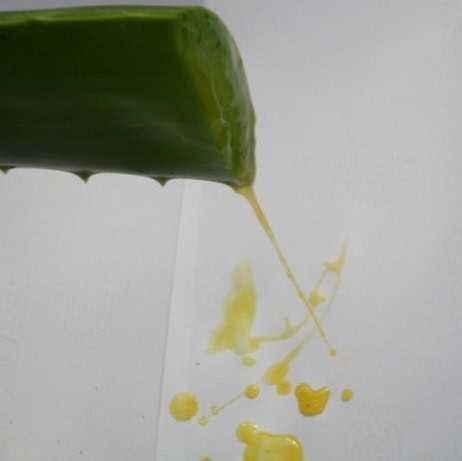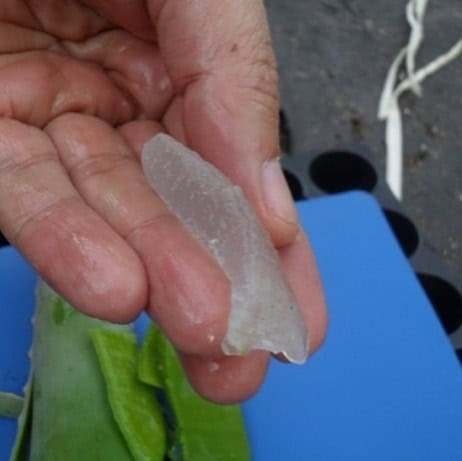Many Ways To Use Aloe Vera Gel and How to Store Them
You’ve probably noticed aloe vera as an ingredient in many skin care products, but you might not realize just how versatile this succulent’s gel can be in your daily routine. From soothing sunburns to enhancing your hair care regimen, pure aloe vera gel offers a natural solution for various beauty and wellness needs. While it’s tempting to simply snap off a leaf and start applying, knowing the proper extraction and storage methods will guarantee you’re getting the most benefits from this remarkable plant. Let’s explore the essential techniques and creative applications that’ll help you harness aloe’s full potential.
Contents
Benefits of Fresh Aloe Vera
Fresh aloe vera’s healing properties make it a powerful natural remedy for various skin conditions. You’ll find it effectively treats sunburns, minor cuts, and acne while reducing inflammation and promoting skin regeneration.
The gel contains vitamins A, C, and E, plus enzymes that boost collagen production. When you apply fresh aloe vera, you’re providing antibacterial protection and deep moisture to damaged skin.
Extracting Gel From Leaves
The process of extracting aloe vera gel starts with selecting a mature leaf from the plant’s base. Cut the leaf at a 45-degree angle and let it drain for 10-15 minutes to remove yellow latex.

Wash thoroughly, then lay flat and slice off the thorny edges. Use a spoon to carefully separate the clear gel from the outer skin, avoiding any green parts.

Proper Storage Methods
To keep your aloe vera gel fresh and effective, you’ll want to store it at a temperature between 40-50°F (4-10°C) in your refrigerator.
When choosing a container, opt for an airtight, dark glass jar or BPA-free plastic container that will protect the gel from light exposure and oxidation.
While properly stored homemade aloe vera gel typically lasts 1-2 weeks, you can extend its shelf life by adding natural preservatives like vitamin C or vitamin E oil.
Storage Temperature Guidelines
Proper storage temperatures play an essential role in maintaining aloe vera gel’s therapeutic properties. You’ll want to store your aloe vera gel between 50-70°F (10-21°C).
If you’re using homemade gel, keep it refrigerated at 40°F (4°C) to prevent oxidation and bacterial growth. Don’t freeze the gel, as this can break down its beneficial compounds and alter its consistency.
Container Types For Preservation
For ideal preservation of aloe vera gel, selecting appropriate storage containers makes a significant difference. You’ll want to choose containers that protect against light damage and prevent contamination.
- Dark-colored glass bottles with airtight lids
- BPA-free plastic containers with secure seals
- Amber-tinted squeeze bottles for easy application
- Small, portion-sized containers to minimize air exposure
When storing your gel, guarantee all containers are sterilized before use.
Natural Skin Care Recipes
You can create a calming face mask by mixing fresh aloe vera gel with honey and cucumber puree, which helps reduce redness and inflammation. For a nourishing hand cream, combine aloe gel with coconut oil and vitamin E oil in a small jar, then whip the mixture until it reaches a smooth consistency.
These natural skincare recipes let you harness aloe vera’s healing properties while avoiding harsh chemicals found in commercial products.
Soothing Face Mask Recipe
Creating a soothing face mask with aloe vera gel offers a natural way to nourish and calm irritated skin. Mix 2 tablespoons of pure aloe vera gel with your choice of these ingredients:
- 1 tablespoon of honey for extra hydration
- 1 teaspoon of turmeric powder for brightening
- 2 drops of tea tree oil for acne-prone skin
- 1 teaspoon of yogurt for gentle exfoliation
Apply to clean skin for 15 minutes, then rinse thoroughly.
Aloe Hand Cream DIY
Making your own aloe hand cream lets you harness the plant’s healing properties while avoiding harsh chemicals found in commercial products. Blend 1/4 cup fresh aloe gel with 2 tablespoons coconut oil, 1 tablespoon shea butter, and 5 drops vitamin E oil. Whip ingredients until smooth, then store in an airtight container.
Your homemade cream will moisturize dry hands for up to two weeks.
Hair and Scalp Treatments
The versatility of aloe vera gel makes it an excellent natural remedy for various hair and scalp concerns. You’ll find it effective for treating common issues and promoting healthier hair growth.
- Apply directly to your scalp to combat dandruff and itchiness.
- Mix with your regular shampoo to add moisture and shine.
- Create a pre-wash hair mask by blending with coconut oil.
- Use as a natural styling gel for frizz control.
Digestive Health Applications
If you’re struggling with acid reflux, aloe vera gel can help calm the burning sensation and reduce inflammation in your esophagus when consumed as a juice or supplement.
Your digestive system benefits from aloe vera’s natural healing properties, which work to repair and protect the gut lining. You’ll find that regular consumption of aloe vera gel can promote overall digestive health by reducing irritation and supporting the growth of beneficial gut bacteria.
Acid Reflux Relief
Many people struggling with acid reflux have found relief by consuming pure aloe vera gel, which helps reduce inflammation and soothe the digestive tract. You’ll find it most effective when taken before meals, especially if you’re prone to heartburn.
- Mix 2 tablespoons with water or juice
- Take it 20 minutes before eating
- Don’t exceed 2 ounces per day
- Choose only food-grade aloe vera gel
Gut Repair Benefits
Beyond acid reflux relief, aloe vera gel stands out as a powerful ally for overall gut health. You’ll find it helps repair your intestinal lining, reduces inflammation, and supports beneficial gut bacteria.
Mix 2 tablespoons of pure aloe gel with water or juice daily to soothe irritated intestinal tissues, improve nutrient absorption, and promote regular bowel movements for those you care for.
First Aid Uses
Aloe vera’s healing properties make it an excellent natural remedy for various first aid situations. You’ll find it particularly helpful for treating minor emergencies at home or when traveling.
Apply aloe vera gel directly to:
- Minor burns and sunburns to reduce pain and promote healing
- Small cuts and scrapes to support natural wound healing
- Insect bites to relieve itching and inflammation
- Skin rashes to soothe irritation and redness
Beauty Product Combinations
Mixing aloe vera gel in with your favorite beauty products can enhance their effectiveness and add natural healing benefits. You can blend it with your moisturizer, foundation, or face mask for added hydration.
Combine it with your hair conditioner to soothe scalp irritation, or mix it into body lotion to calm sensitive skin. Add it to lip balm for extra moisture.
Signs of Gel Spoilage
Several telltale signs indicate when your aloe vera gel has gone bad. To protect those you care for from using spoiled gel, watch for these warning signs:
- A sharp, sour smell instead of its natural mild scent
- Discoloration from clear to cloudy or brown
- Unusual thickness or watery consistency
- Presence of mold, especially black or green spots
Common Application Mistakes
Many people slip up when applying aloe vera gel, leading to reduced effectiveness or skin irritation. You’ll diminish the gel’s benefits if you don’t properly clean your skin first, apply it to wet skin, or use too much product.
Don’t rub the gel too vigorously – instead, pat it gently. Also, avoid applying it to deep wounds or using it on infected areas.
